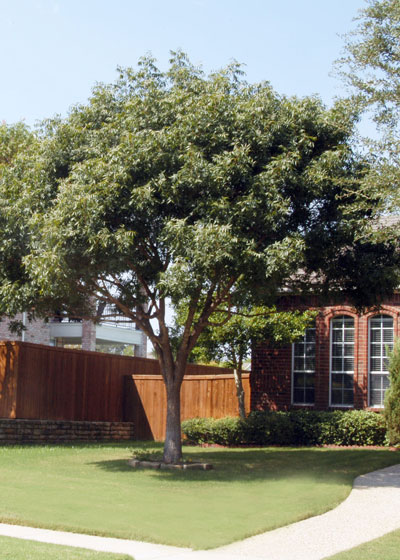Trees for Fall Color: Chinese Pistachio
Note: a person can use any common name he or she wishes for a plant. Hence crapemyrtle or crape myrtle. Botanists will tell you it’s just a matter of preference.
In the case of Pistachia chinensis, I have always used “Chinese pistachio.” Many horticulturists say “pistache.” Neither is correct. Neither is incorrect. Use the one that feels best off your lips.

Photo: Few of our Texas-friendly shade trees are as dependable in providing fall color as Chinsese pistachios.
It was 1972. I was serving as Dallas County Extension Horticulturist, and I got a call to visit a home near Walnut Hill and Inwood. Lovely old home and a friendly woman with her bejeweled white lap poodle. I was there to take a photo of a gorgeous African violet collection for my column in the Dallas Morning News. (It was the lady’s expectation that the poodle would also be in the photo.)
But that lady and that plant and that poodle weren’t the things that changed my horticultural life that afternoon. It was a large shade tree she had growing in her front yard. I asked what it was, and she told me she had one of the few Chinese pistachios, and that I’d need to come back that fall when it turned red.
I did my homework on my newly discovered tree, and when late November rolled around, I did go back, and I was amazed. Fall color doesn’t come easily here in Texas, yet this lovely tree was dazzling.
I don’t recommend new trees easily, especially those whose names suggest they’re from somewhere far away from Texas. So I cautiously read up and asked questions. I was asking the wrong people, because no one knew a lot about it. I’m always on the lookout for handsome plants while I’m out on the town, and I began to notice other Chinese pistachios. But not a lot.
Gradually I started to see it in garden centers and I got up my courage to start suggesting it. I planted one at our home in Farmer’s Branch, and it did very well for the five years that we lived there.

Photo: Even during the growing season, Chinese pistachios are very attractive landscaping trees.
That was the 1970s, but things are radically different now. Chinese pistachios are mainstream, top-quality, highly revered shade trees in Texas. They’re widely available and frequently used in the finest residential and commercial designs. And the fall color has remained a great constant.
What you’ll want to know…
Here are the critical facts to let you know if Chinese pistachios could have a place in your future.
• Mature size: 40 to 50 ft. tall and wide (fairly large shade tree, so keep away from streets, power lines);
• Rate of growth: Fast enough to be satisfying, yet slow enough to be durable;
• Summer color: Dark green compound leaves;
• Fall color: Almost always screaming red;
• Fruit: Clusters of small red (inedible) fruit/can be very modestly invasive, but easily removed;
• Special needs: Moist, deep soil and nitrogen;
• Problems: Sunscald and splitting of young trunks when exposed to direct sunlight first year or two after planting – paper tree wrap is required for protection.
Overall Grade: A-Plus! As good as any other top-tier shade trees.
Texas A&M seems to agree. They named it a Texas SuperStar® plant many years back. Here’s what they have to say about it.
